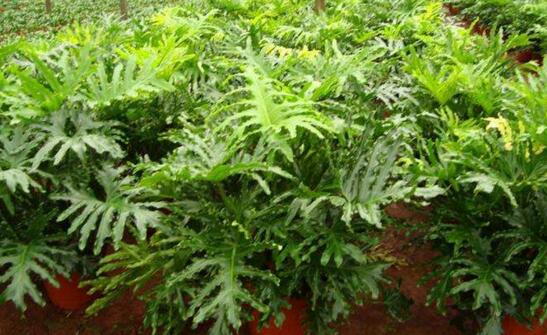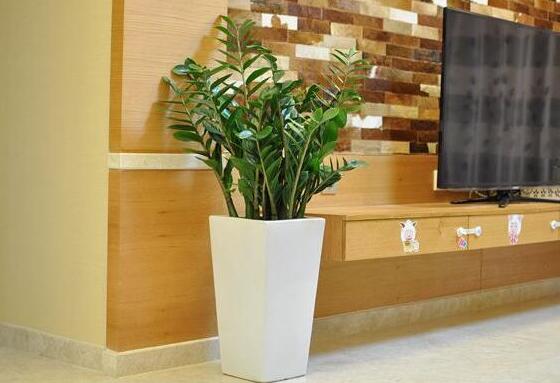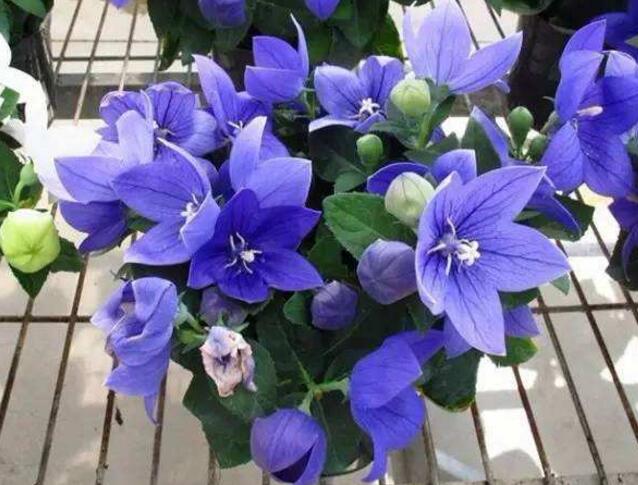Prevention and control of spring feather leaf rot, control of watering / fertilization / diseases and insect pests
When planting Chunyu, yellowing of leaves is a headache, and in addition to this, leaf rot is also heartbreaking. Rotten leaves not only affect the appearance but also indicate that Chunyu has health problems. Today, we will introduce the prevention and control methods of leaf rot of Chunyu.
Spring feather leaf rot control method

Different from the causes of leaf yellowing, there are generally four reasons for rot, namely excessive fertilization, too high fertilizer concentration, too much watering, pests and diseases. The prevention and control method of leaf rot in spring is based on these three reasons. In choosing which method, we must find out the correct reason.
1. Excessive fertilization
Fertilization is essential for the healthy growth of spring feathers, but if too much fertilizer is applied to them, it will backfire, the roots will not only be damaged, but also affect the normal nutrient absorption, and finally will cause the leaf rot.
Control methods: help Chunyu change the pot soil, and pay attention to the method of fertilization, this point in Chunyu breeding methods and precautions have detailed introduction, and in the vigorous growth period, apply fertilizer once a month, do not need frequent fertilization.
2, fertilizer concentration is too high
Some people apply fertilizer correctly and not many times, but there are still cases of leaf rot, because the concentration of fertilizer is too high, which will lead to excessive fertilizer absorption from the soil, not only leaves may rot, but also other lesions may occur.
Control methods: In the process of fertilization, be sure to pay attention to the concentration of fertilizer should be moderate, if the concentration of fertilizer is high, it should be diluted before fertilization, and along the edge of the pot soil to apply, rather than near the roots, this is the basic spring feather leaf rot control method.
3. Too much watering
Chunyu likes a humid environment, but if the amount of watering is too large, it will damage the roots of Chunyu and let the leaves rot, especially in the sultry summer. If there is long-term accumulation of water in the basin, it is easy to occur. This is a big taboo when raising any plant.
Prevention and control methods: watering can be changed to once a day, each watering can observe whether there is water flowing out of the bottom drain hole of the basin, when the basin soil is wet, it can be adjusted according to weather conditions, such as winter or rainy days, the amount of watering can be reduced.
4. Diseases and pests
Among all possible causes of leaf rot, pests and diseases are the most important. Once any plant encounters pests and diseases, leaves will soon rot, yellow, fall off, etc. Therefore, pests and diseases must be killed in the cradle.
Prevention and control methods: can refer to the spring feather common pest control, appear pests and diseases to timely treatment, so as not to appear more leaves rot situation.
Summary: This article introduces the prevention and control methods of spring feather leaf rot in detail, mainly focusing on diseases and insect pests, watering, fertilization and other issues, which are closely related to our maintenance methods, so we should cultivate good maintenance habits in the process of planting at ordinary times, which can avoid the occurrence of leaf rot.
What about the yellow leaves? What about the rotten leaves?
Leaf yellowing, falling, rot, etc. are some of the problems that often occur in the process of plant cultivation. Generally speaking, such problems mainly come from a certain part of the plant growth environment, so we need to eliminate and confirm the causes of the problems one by one, so as to solve the problems in a targeted manner.
What about yellow leaves?
1. Yellow water: It is mainly caused by improper water and fertilizer. Too much watering leads to poor soil permeability, which leads to root rot of spring feather plants. In this case, it is necessary to reduce the amount of watering and loosen the soil to enhance soil permeability.
2. Yellow fertilizer: mainly caused by excessive fertilizer application. Old leaves turn yellow and fall off while new leaves are plump and do not spread. In this case, you can sprinkle a layer of cabbage or radish seeds on the plant and pull them out after they emerge to consume excess nutrients.
3, drought yellow: due to long-term non-watering or plant dehydration caused by the lower leaves dry yellow or fall aging. In this case, increase the amount of watering and spray more water to meet the water requirements of plants and keep the environment moist, or spray appropriate chemicals to supplement the necessary water for plants.
4. Alkaline yellow: Due to the acidic soil of spring feathers and the alkaline water quality and soil in the north, the leaves fade and turn yellow. In this case, fermented rice washing water or rainwater should be poured.
What if the leaves rot?
If rot has occurred and is not serious, pruning can be carried out according to the law. If excessive moisture or improper fertilization occurs, soil replacement and replanting are required.
Before planting plants, be sure to choose soil that is permeable and breathable, so that even if you water too much occasionally, it will be easy to drain out.
Do not pour it in daily watering, but pour it slowly, and when watering, you can control the amount of watering, see how much water is poured, the drain hole below will water out, and then make a record, so that there will be comparison in watering in the future. When the temperature drops to 15 degrees, be sure to control watering, when the plant's demand for water gradually decreases.
When fertilizing at ordinary times, pay attention to the concentration of fertilizer, dilute the thicker fertilizer, and slowly apply it along the edge of the pot.
Try to choose a place with good air circulation for maintenance.
What to do if spring feather has pests and diseases
1. Types of spring feather pests
Generally speaking, plant diseases and insect pests are divided into diseases and pests.
Common diseases of spring feather include leaf spot, anthracnose, etc. Relatively speaking, leaf spot is more common than anthracnose. Spring feather ring pattern leaf spot disease mainly manifested as, there are nearly round leaf spots, brown to reddish brown, dark brown edge, yellow halo around, red brown ring pattern faintly appeared on the spot surface, needle size spots on the disease spot.
Common pests of spring feather include red spider, scale insect, etc. Relatively speaking, scale insect is more common than red spider, and the reason for the appearance of red spider is likely to be low air humidity, and the reason for the appearance of scale insect is likely to be poor ventilation.
2, spring feather pest treatment methods
For spring feather leaf spot, anthracnose and other diseases, can be used to control multi-spirit bacteria, thiophanate-methyl, zinc and other wettable powder. Leaf spot is more common than anthracnose. Specifically, leaf spot disease needs to be controlled by spraying 1000 times solution of 50% polymycete.
For spring feather red spider, scale insect and other pests, can spray special killing chemicals for control. Specifically, scale insects need to be controlled by spraying 50% omethoate EC 1000 times. In addition, the prevention of red spiders need to increase air humidity, scale insects can be prevented by strengthening ventilation.
In addition, if the leaves appear yellow, dry, and scorched, they need to be pruned in time.
Cutting propagation method of spring feather
Chunyu often uses cutting propagation method to sandy soil. The breeding season is best from May to September. Simply put, it is to cut 2-3 strong stems, insert them into moss or coarse sand to take root, keep the soil moist, and generally take root in 20 days. Or the upper part of the spring feather plant cut for cuttage, the lower part of the old plant will sprout many sprouts, these sprouts can also be propagated.
In addition to yellowing leaves and leaf rot, pests and diseases are also a problem that needs to be paid close attention to during spring feather planting. Usually, a plant will infect other plants around it. If it is not properly controlled, it may threaten all plants, so we should prevent and control them in time.
What about the yellow leaves of spring feather, yellow leaves of spring feather analysis?
Chunyu is a perennial herb with foliage. Stems very short, leaves from the top of the stem to all sides, closely arranged, neat, clustered. Plant height and 1 m, thick erect stem, diameter and 10 cm, stem has obvious leaf marks and wire shaped aerial root. The leaves extend in all directions at the top of the stem, with petioles about 40 - 50 cm long. The leaves are fresh and shiny, ovate and heart-shaped, up to 60 cm long and 40 cm wide, but generally only about half the size of potted plants. The whole leaves are pinnate and leathery. The leaves of seedling stage were thin and triangular, and gradually enlarged with the growth of leaves, and the more and deeper the pinnacles were.
Analysis on the Causes of Yellowing of Spring Feather Leaves
As far as the growth habit of spring feather is concerned, because spring feather likes wet and cold, it is afraid of strong light, so the external reasons include temperature discomfort, low humidity, light discomfort, excessive fertilization, watering too frequently, pests and diseases, etc. In addition to this, there are also reasons for basin soil.
Spring leaves yellow pot soil causes and symptoms
Pot soil nitrogen deficiency: small leaves, yellow leaves, lower leaves first yellow and then all green into yellow.
Phosphorus deficiency in pot soil: leaf curl, dark green color, lower veins yellowing.
Potassium-deficient soil: lower leaf margins appear brown, and easy to lodge.
Magnesium deficiency in pot soil: white edges and middle parts of leaves
Iron deficiency in basin soil: scorched brown spots and dryness
How to deal with yellow spring leaves
Yellow water: mainly caused by improper water and fertilizer. Too much watering leads to poor soil permeability and then causes root rot of spring feather plants. In this case, it is necessary to reduce the amount of watering and loosen the soil to enhance soil permeability.
Yellow fertilizer: mainly due to excessive fertilizer. Old leaves turn yellow and fall off while new leaves are plump and do not spread. In this case, you can sprinkle a layer of cabbage or radish seeds on the plant and pull them out after they emerge to consume excess nutrients.
Dry yellowing: Dry yellowing or shedding of lower leaves due to prolonged unwatering or dehydration of the plant. In this case, increase the amount of watering and spray more water to meet the water requirements of plants and keep the environment moist, or spray appropriate chemicals to supplement the necessary water for plants.
Alkaline yellow: Because spring feather likes acidic soil and northern water quality and soil are alkaline, leaves fade yellow and fall off. In this case, fermented rice washing water or rainwater should be poured.
- Prev

How to raise the money tree, the breeding methods and precautions of the money tree / careful cultivation
For the money tree, we should have heard of it, it is a more common foliage plant, because the name and meaning are very beautiful and widely welcomed by people. In life, many people want to raise a money tree, but they don't know how to raise it. In this regard, the editor carefully sorted out the cultivation methods and matters needing attention of the money tree.
- Next

How to raise Platycodon grandiflorum in pot, the breeding methods and precautions / sufficient light of Platycodon grandiflorum
Platycodon grandiflorum is a kind of flower grown all over the world, which is highly ornamental, so it is a good choice to raise one for decoration at home. About potted Platycodon grandiflorum how to raise, Platycodon grandiflorum breeding methods and matters needing attention? Next, the editor will take you to learn about it.
Related
- Fuxing push coffee new agricultural production and marketing class: lack of small-scale processing plants
- Jujube rice field leisure farm deep ploughing Yilan for five years to create a space for organic food and play
- Nongyu Farm-A trial of organic papaya for brave women with advanced technology
- Four points for attention in the prevention and control of diseases and insect pests of edible fungi
- How to add nutrient solution to Edible Fungi
- Is there any good way to control edible fungus mites?
- Open Inoculation Technology of Edible Fungi
- Is there any clever way to use fertilizer for edible fungus in winter?
- What agents are used to kill the pathogens of edible fungi in the mushroom shed?
- Rapid drying of Edible Fungi

